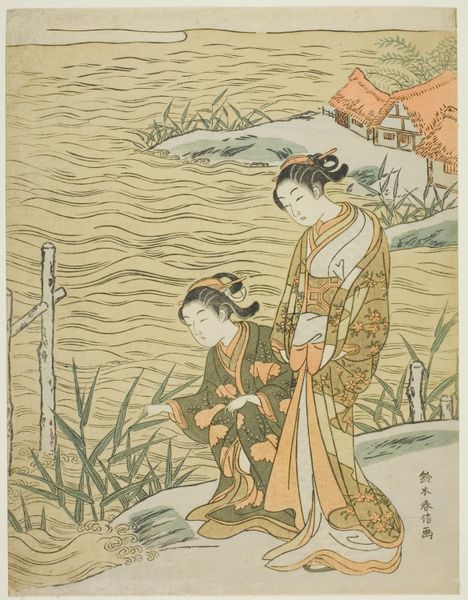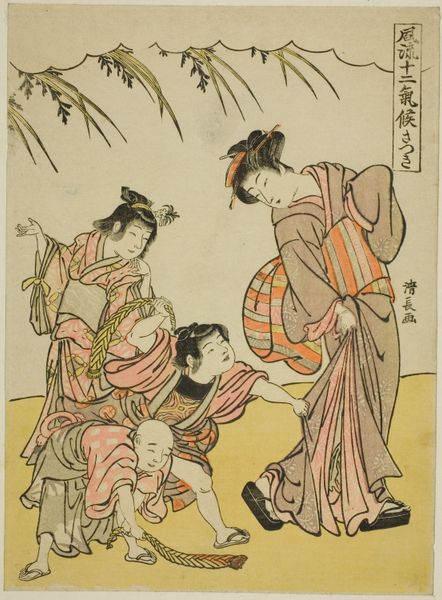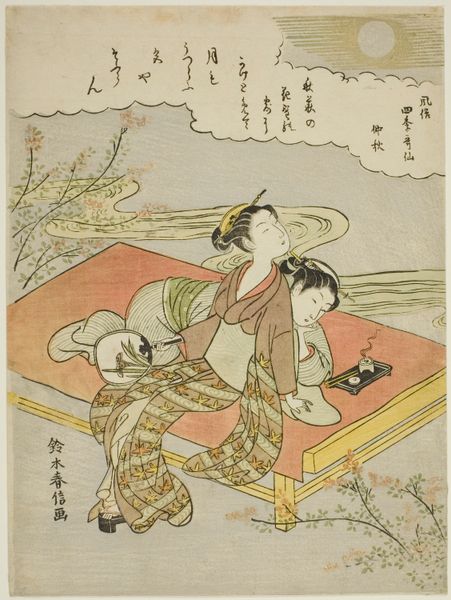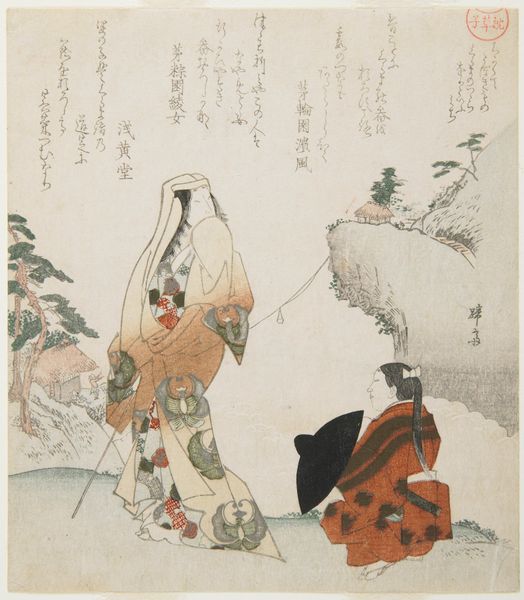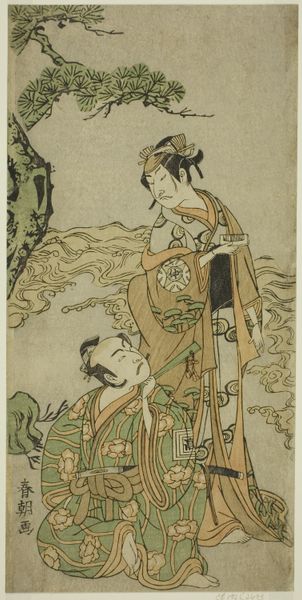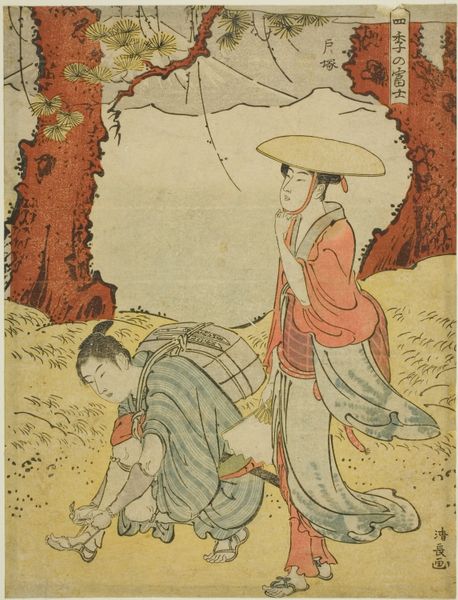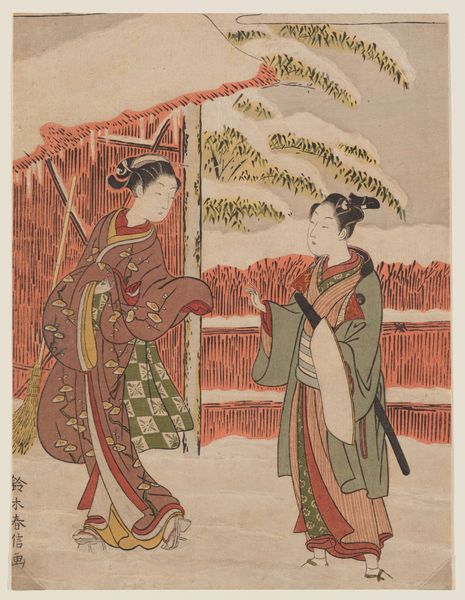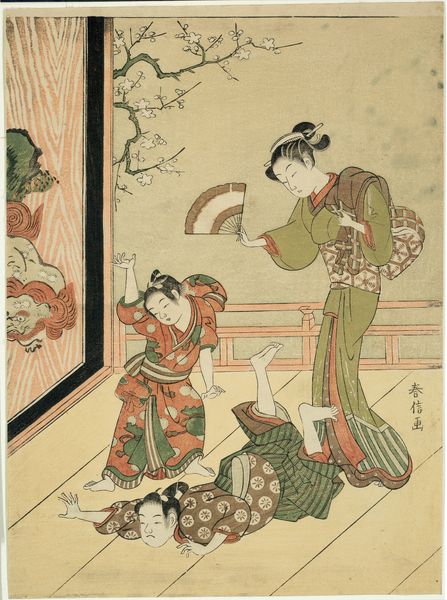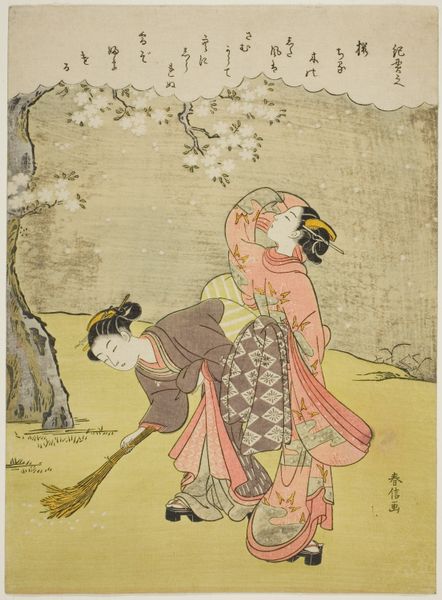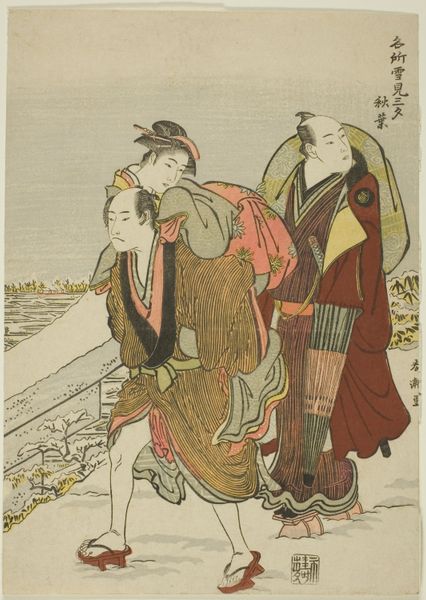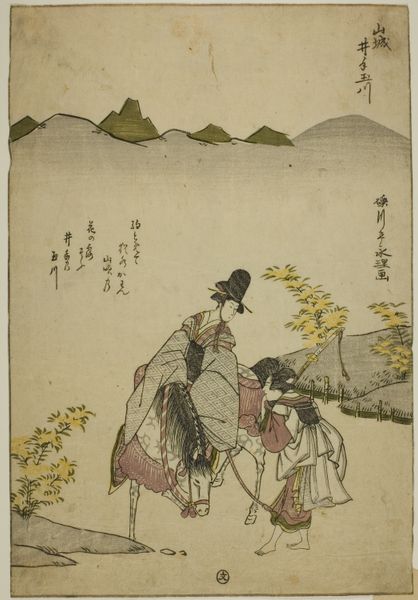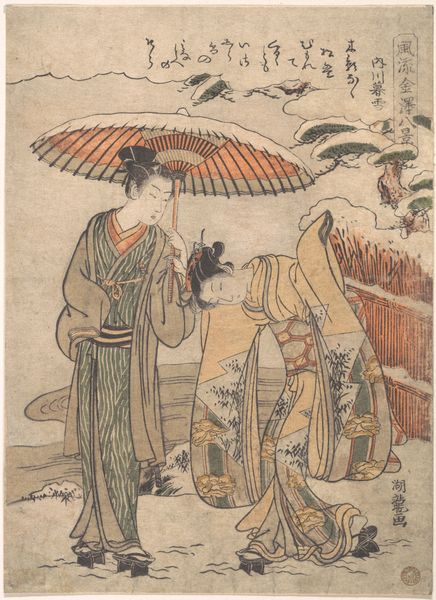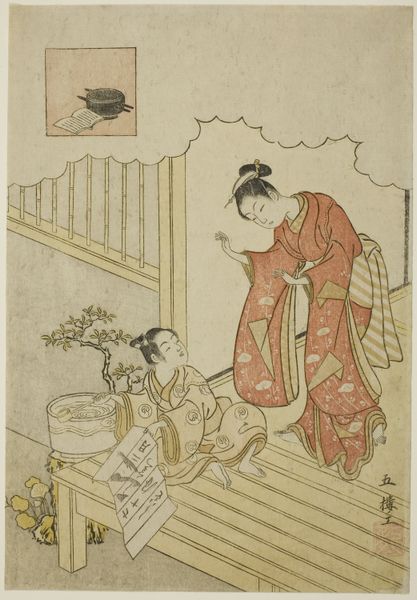
print, woodblock-print
# print
#
asian-art
#
landscape
#
ukiyo-e
#
japan
#
figuration
#
woodblock-print
#
genre-painting
Dimensions: 10 7/8 × 8 1/4 in.
Copyright: Public Domain
Curator: "Making a Snow Dog" is a captivating woodblock print crafted around 1767-1768 by Suzuki Harunobu. The Art Institute of Chicago holds this gem of the ukiyo-e tradition. Editor: It strikes me as serene yet playfully intimate, doesn't it? The composition, with its gentle washes of color and soft lines, gives the entire scene an ephemeral quality, almost like a dream captured in the snow. Curator: Indeed. The artwork reflects Harunobu’s influence on depicting bijin-ga, images of beautiful women, set amidst scenes of daily life. The placement of these figures—absorbed in the childlike pursuit of crafting a snow dog—reflects on the social climate and values placed on leisure and domesticity during the Edo period. Editor: Looking at the figures, their elaborate kimonos against the stark white snow highlights their refined social standing. But more than that, note how the artist used varying line weights to suggest depth. See how the robes have bold, graphic outlines while the facial features have barely-there thin lines? It’s amazing. Curator: Absolutely. That speaks to the artistic innovation and technical skill required for multi-block color printing developed at the time. And if you examine it further, it challenges prior gender roles. While earlier art emphasized formalized portraits, here we see women playfully taking on active roles—shaping culture quite literally in this snow dog. Editor: Also notice how Harunobu subtly offsets the composition by angling the red structure on the right against the dog on the left? That visual push-and-pull lends an off-kilter rhythm to the otherwise calm tableau. Curator: I see your point. Its asymmetrical nature reflects the emerging urban aesthetics in Japan. This woodblock isn't just aesthetically beautiful; it's a window into evolving social values where everyday joy starts making its way into more prominent artwork. Editor: Ultimately, the way Harunobu juxtaposes graphic elements with soft, organic textures renders the scene universally relatable and endlessly compelling, doesn’t it? Curator: Agreed, seeing it displayed reminds us that the intersection of art, culture, and the public creates conversations beyond any particular timeframe.
Comments
No comments
Be the first to comment and join the conversation on the ultimate creative platform.
